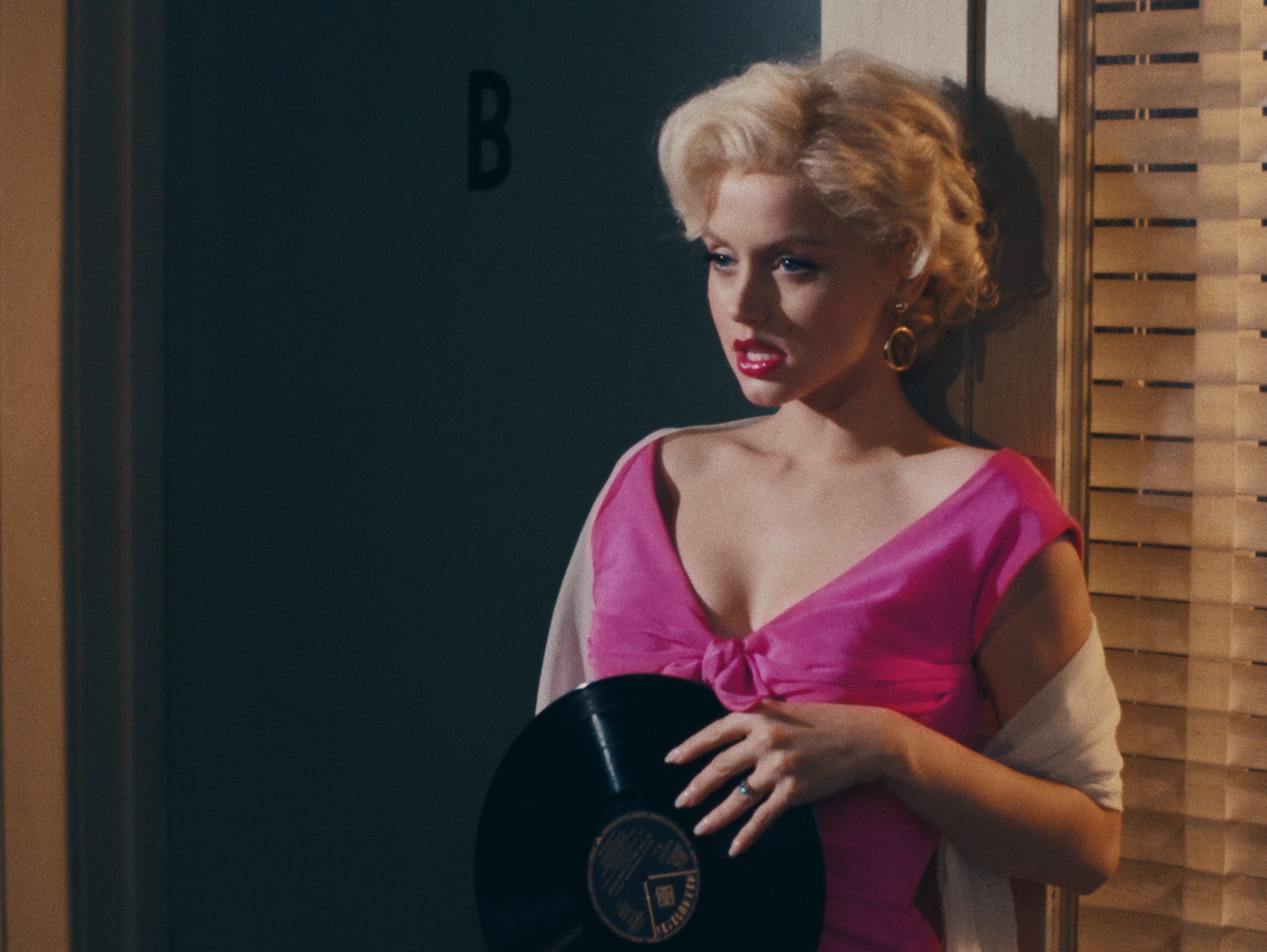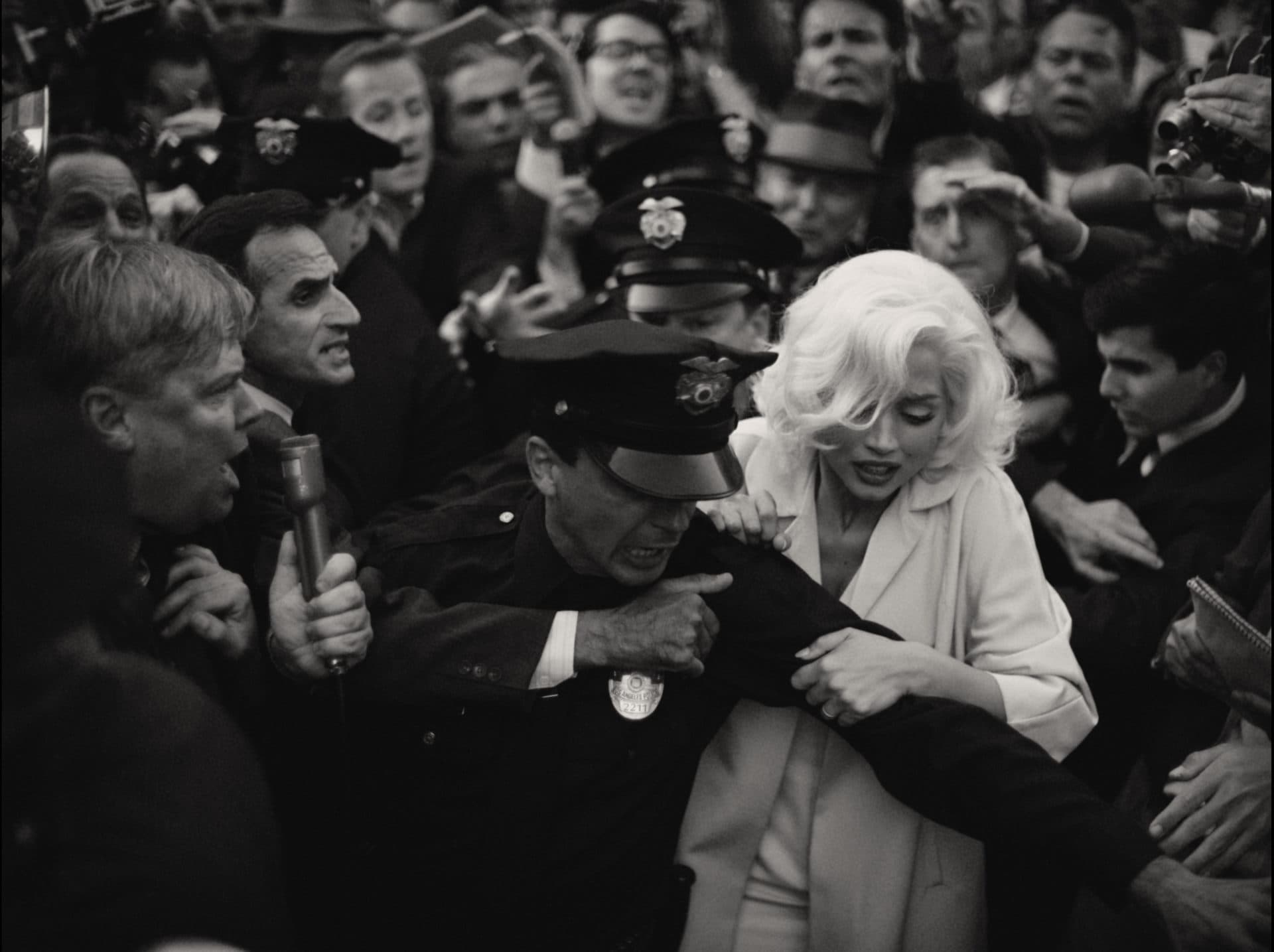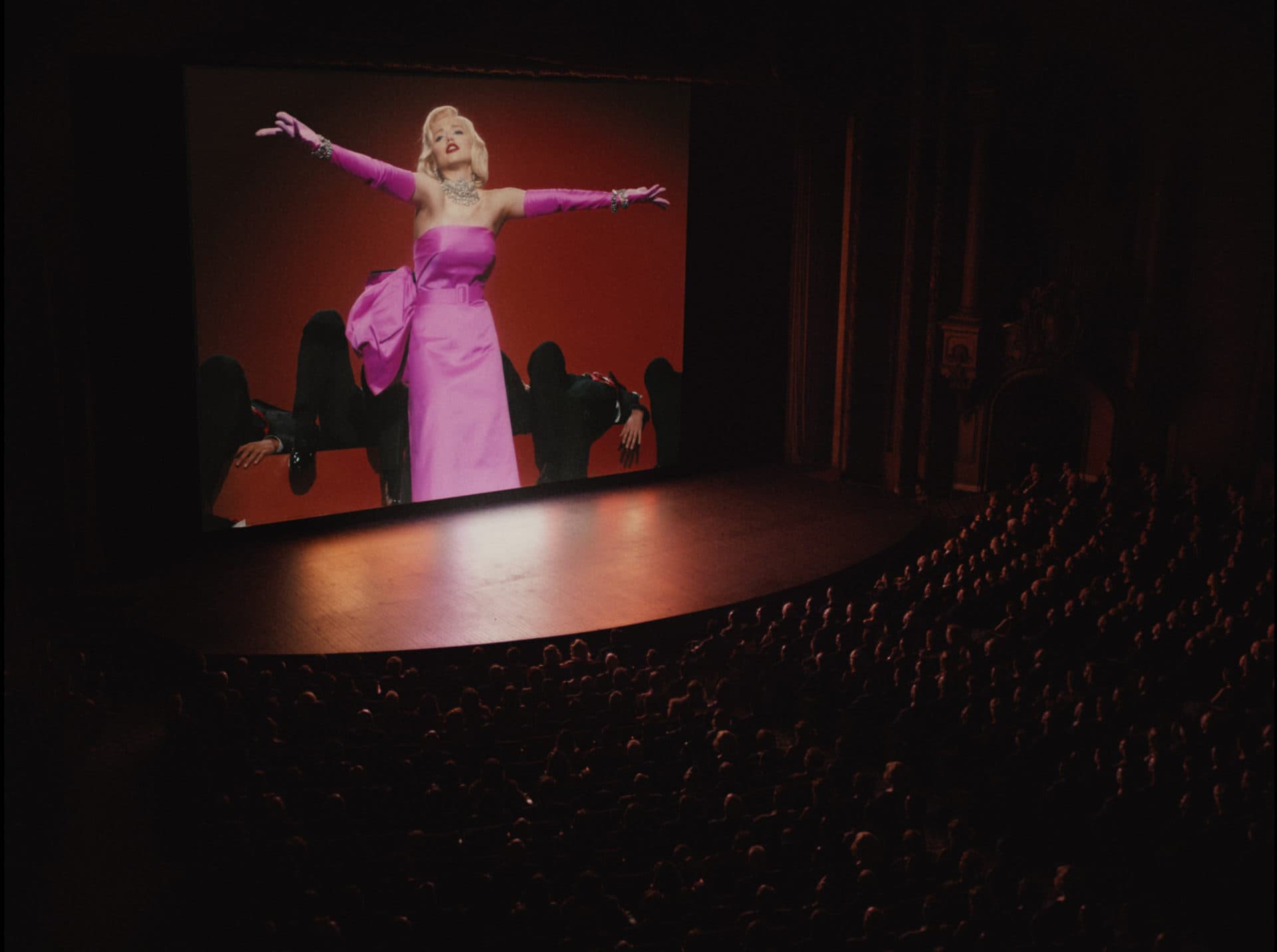Advertisement
Review
Marilyn Monroe biopic 'Blonde' is a 166-minute death knell of dehumanization

Over the six decades since her death, the image of Marilyn Monroe has been flattened into a piece of pop art kitsch. Instantly recognizable even to people who have never seen one of her films, the starlet blowing kisses with her skirt blown up has become an abstract symbol of Hollywood glamour and tragedy. As one can probably tell from the title, director Andrew Dominik’s “Blonde” has little interest in the actual life and times of Norma Jeane Mortenson. Based on the 2000 novel by Joyce Carol Oates, it’s a mostly fictionalized meditation on the idea of Marilyn Monroe, a 166-minute death knell of dehumanization in which we watch a young woman getting ground up by a culture of monsters aching to own her, and we in the audience are part of the problem. It’s a horror movie about objectification, about your body no longer belonging to you — in this case becoming property of the world. It is a grueling picture and occasionally a stupid one. But these are big ideas, and “Blonde” takes big swings.
Ana de Armas makes a brilliant Monroe, capturing the breathy sex kitten charisma but strategically allowing her Cuban accent to come forth at a couple of key moments to shatter the illusion, especially when she’s talking about “playing the part of the famous actress.” The film painstakingly re-creates the most well-remembered pictures of Monroe, but stages them in scenes where no photographer is present. “Blonde” is constantly stepping outside of itself like that and interrogating its own iconography, with Dominik and cinematographer Chayse Irvin employing a dazzling array of film stocks, aspect ratios and deliberately artificial flourishes to make us question what we’re watching, and why.
It'll probably be baffling to anybody expecting a straight biopic. Beginning with her mentally disturbed mother (Julianne Nicholson) trying to drown young Norma Jeane in the bathtub, the movie skips around the more sordid aspects of the actress’ short life. “Blonde” keeps Oates’ outré inventions like Monroe living with the sons of Charlie Chaplin and Edward G. Robinson in a ménage à trois, before moving into her miserable marriages to men billed as The Ex-Athlete (Bobby Cannavale playing Joe DiMaggio) and The Playwright (Adrien Brody as Arthur Miller). She calls all her lovers “Daddy” to deeply disturbing effect, falling for her mother’s delusional insistence that the father she never met was secretly a Hollywood superstar.

During Monroe’s first meeting with a studio head, he wordlessly rapes her over his desk. It’s a pattern of abuse that will continue all the way to the White House. “Am I meat?” she asks more than once, while we watch her being pitilessly passed around by powerful men. “Blonde” is by no means an easy movie to sit through, and earns its NC-17 rating honestly. It’s a pulverizing experience, containing countless sexual assaults and already infamous moments like a toilet’s-eye-view of Monroe vomiting and an intensely graphic abortion scene shot to look like the camera is being ripped out of her womb. The movie makes violent and visceral Monroe’s loss of bodily autonomy, her figure a fantasy to be shared by millions. The Ex-Athlete wants to possess her. The Playwright projects his childhood obsessions onto her. She’s the most photographed woman in the world but nobody sees her. The adoring crowds in “Blonde” become increasingly grotesque as the film wears on, the faces of fans distorting into rictus, predatory grins while flashbulbs pop off like rife fire.
Dominik will never be confused with a subtle filmmaker. His 2012 “Killing Them Softly” tried to update a 1974 George V. Higgins crime novel as an allegory for the financial crisis by having all the hitmen listen to NPR's Marketplace. (The film also has a scene of characters shooting heroin set to The Velvet Underground’s “Heroin.”) He’s a bit much sometimes. But the New Zealand-born Aussie also has an incisive understanding of American mythology, and his 2007 masterpiece “The Assassination of Jesse James by the Coward Robert Ford” was about two men swallowed up and embalmed by their own legends, which is the eerie, asphyxiating aim of “Blonde” as well. Though Dominik repeatedly emphasizes how intelligent and well-read she was, I suppose one could argue that he gives short shrift to Monroe’s humor and her brilliance as a performer. But that’s not really the subject of the movie anybody here set out to make, so it’s kind of like being mad that the lawnmower doesn’t do your dishes.
Yet some people have been very angry indeed. The screening I attended was continually interrupted by peals of performative laughter from a critic in the back who had clearly had enough. One of Dominik’s conceits that doesn’t quite come off is Monroe being haunted by accusatory hallucinations of the fetus she aborted, intended to echo the character’s internalization of her own mother’s attempts to murder her. Despite iffy execution, I found the idea sufficiently upsetting, though it was apparently hilarious to the person who felt entitled to disrupt the film for everyone else. (Serious cinephiles would be horrified to know how many press screenings are more like open mic nights.) Since it premiered at the Venice Film Festival earlier this month, “Blonde” has been greeted with an intense hostility from a lot of critical corners — one young writer publicly threatened to beat up the director — but I guess this is understandable, as the movie is intensely hostile toward its audience.
The Disney deluge of soothing nostalgia intentionally infantilizing our popular culture – not to mention prevailing progressive ideals that art should be aspirational and intended to elevate — leaves little room for pictures as brutishly nasty as this one. (Sometimes I forget that not everybody grew up watching “Bad Lieutenant” and midnight movies. Extreme cinema is an acquired appetite.) I don’t begrudge anyone for not wanting to sit through a movie this miserable and intentionally upsetting, but the trigger warning is right there in the NC-17 rating and there’s no shame in not being tall enough for the ride. There should be a place for films like “Blonde” to explore unpleasant images and ideas for an adult audience, preferably one that knows how to behave in public.

It is an awful lot. Probably too much. Like the 700-page Oates book that I’ve been dutifully lugging around for the past couple of weeks and having a terrible time finishing, “Blonde” is so single-minded as to border on the monotonous. The blunt-force trauma of Dominik’s direction becomes deadening over almost three hours, but he saves his most audacious gambit for near the end. In what’s bound to become the movie’s most notorious sequence, a drug-addled and semi-conscious Monroe is abducted by the Secret Service and dragged to a hotel room where she’s forced to fellate JFK.
Her head bobs up and down in extreme closeup as The President, as he’s billed in the credits, takes a threatening phone call from J. Edgar Hoover while watching the Friendship 7 rocket take off on TV. (There’s that Dominik subtlety again.) It’s here, in the midst of the most lurid leering, that de Armas begins narrating again in her own accent, wondering aloud if she’s ended up in a porno film. That’s when the camera pulls back to reveal that we’ve been watching the scene play out on a giant movie theater screen, alongside a rapt audience.
It's an incredible indictment of voyeurs, conspiracy theorists, perverts and lookie-loos, exposing the kind of morbid attention that drives posthumous biopics and decades of merchandising opportunities spun out of a person’s endless exploitation and unfathomable pain. “Blonde” chronicles many crimes against Marilyn Monroe that may or may not have happened a long time ago, but in that moment, the movie makes clear how our entire culture remains complicit.
“Blonde” starts streaming on Netflix on Wednesday, Sept. 28.
